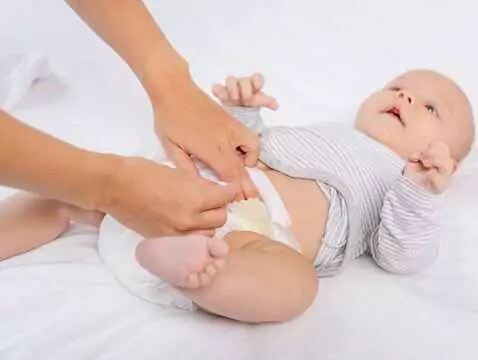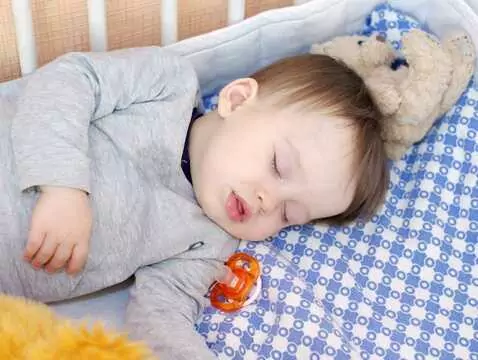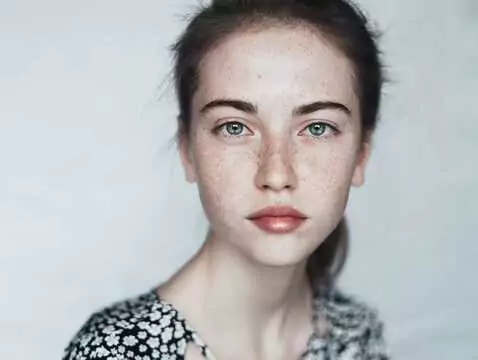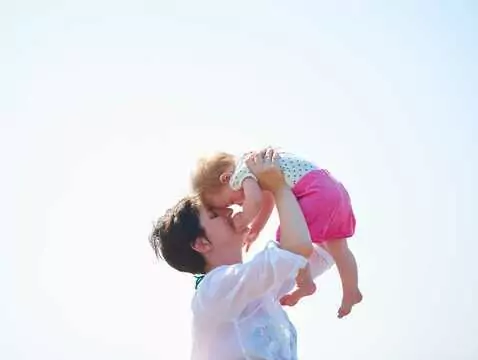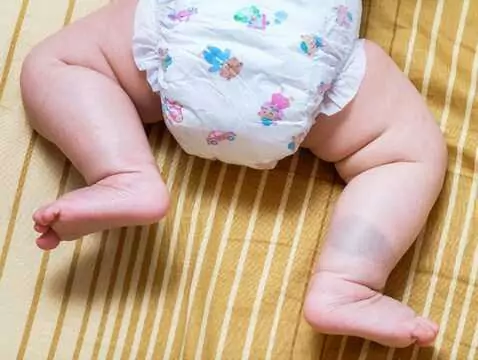Is my baby developing properly? Are his/her current behaviour and motor skills age appropriate? Do I need to see a paediatric neurologist urgently? An article by a specialist from the Silesian Paediatrics Centre in Zabrze answers these and other questions. The first part of the text discusses the child's development in the first 6 months of life.
2 MONTH
GROWING
He lifts his head in a position on his stomach for up to 9 seconds. The face and the ground form a 45º angle.
SITTING
Sits up and is able to keep his head straight, still wobbly, but for 5 seconds.
WALKING
Reflex support and marching already disappearing.
HANDLING
Hands are increasingly open.
PERCEPTION
The infant stands still, e.g. at the sound of a bell.
SOCIAL BEHAVIOUR
A most wonderful event occurs! The child begins to smile at the sight of the mother leaning over.
MAKING SOUNDS
He starts to make sounds like "a" or "e" and later "h" is added.
3 MONTHS
STARTING
The baby raises his head holding it for about 1 minute. The face and the ground form a 90º angle. The baby starts to lean on the forearms observing the surroundings. The pelvis rests flat on the ground.
ISADING
Briefly lifts head while pulling up to sit with hands. In sitting position holds head straight. Back is not yet straight.
WALKING
Bends legs when resting on the ground.
GRIPPING
Moves a rattle given to hand. Attempts to put it in mouth.
PERCEPTION
Wags eyes behind rattle, turns head towards moving toy.
SOCIAL BEHAVIOUR
Smiles more and more, at this age any unfamiliar face can make him smile.
MAKING SOUNDS
The child begins to babble or coo - producing the combined sounds "rrr", which resembles cooing or gargling.
3 MONTHS - WARNING SIGNALS IN THE RACSOJ
U - child does not look at surroundings, objects, does not follow people or objects in movement, does not turn head after an object that is disappearing from view, does not make a humming or cooing sound
E - does not smile at the sight of faces, does not cry in a varied manner (pain, hunger), does not become animated at the sight of the mother preparing for feeding
R - does not keep head up straight in sitting position for at least half a minute, does not roll over from side to back and does not lean on forearms in stomach position, does not hold a given rattle, does not shake it
4 MONTH
GROWING
Baby "floats" on his tummy, straightens his arms and legs and rests only on his stomach, rocking in this position
SITTING
When pulled up to a sitting position, holds the head in extension of the spine. Keeps head straight when leaning to one side.
WALKING
Mostly keeps legs in a bent position, but in some children active foot resting begins to appear. The child is not yet able to bear his/her own weight.
GRIPPING
Plays with hands, watches them, connects them together.
PERCEPTION
Observes objects and puts them in mouth in a non-accidental way.
SOCIAL BEHAVIOUR
Laughs out loud, especially in response to "taunts" from parents or siblings.
MAKING SOUNDS
The child makes shouts of joy. Begins to use so-called slit sounds: "w" , "f", "s".
5 MONTH
STARTING
Turns from stomach to back, usually when observing an object while lying on the stomach. This is known as passive turning.
ISADING
When pulling up to a sitting position, flexes the head, arms and legs.
WALKING
Briefly takes his own body weight. Usually stands on tiptoes and drops to feet.
HANDLING
Reaches out his hand to a toy by touching it. However, he is not yet able to grasp the object well.
PERCEPTION
Observes moving pictures for several minutes.
SOCIAL BEHAVIOUR
Distinguishes between a harsh and a cordial tone of voice.
MAKING SOUNDS
Becomes more talkative , but does not add new sounds
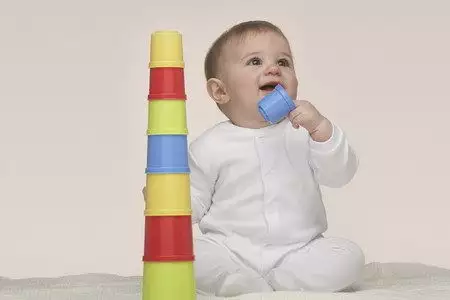
6 MONTH
GROWING
Rests on upright arms for a long time. Hands are completely open.
ISADING
Pulls up easily to a sitting position, controls head hold.
WALKING
Increasingly confident holding weight held under arms.
GRIPPING
Grasps a toy with precision - reaches another milestone. Grasps with whole hand, moves toy from hand to hand.
PERCEPTION
Turns head towards e.g. rustling paper.
SOCIAL BEHAVIOUR
Distinguishes between familiar and unfamiliar voices. Smiles at loved ones in a different way, observes unfamiliar people.
MAKING SOUNDS
Connects syllables in a chained manner: "ge-ge-ge" "da-da-da".
6 MONTH - WARNING SIGNALS IN THE RACSOJ
U - does not grasp objects in one hand under visual control, does not touch his reflection in the mirror with his fingers, does not repeat syllables (if he only makes sounds like babbling, but does not connect the syllables and does not repeat them, this may suggest a hearing impairment)
E - does not distinguish between the faces of relatives and strangers, does not laugh out loud, does not give exclamations of joy, does not turn his/her head when called
R - does not keep his/her head pulled up into a sitting position, does not sit with support for long periods, does not bear weight on legs
Source materials
T. Hellbrügge, J., Hermann von Wimpffen: The first 365 days of a child's life. Foundation for Disabled Children, Warsaw 1992.
M. Dyga-Konarska, A.Bielawska: Sygnały ostrzegawcze w rozwoju psychoruchowym dziecka do lat 3. Informator dla pediatrów i rodziców. Warsaw 2000.
M.Rybakowa, O.Torbus: Kryteria oceny rozwoju psychoruchowego dziecka w wieku 0-3 lat i fizycznego do lat 18. W: Wybrane problemy pediatryczne w praktyce lekarza rodzinnego. Edited by I.Norska-Borówka, W.Lukas. ŚMA 1999.





